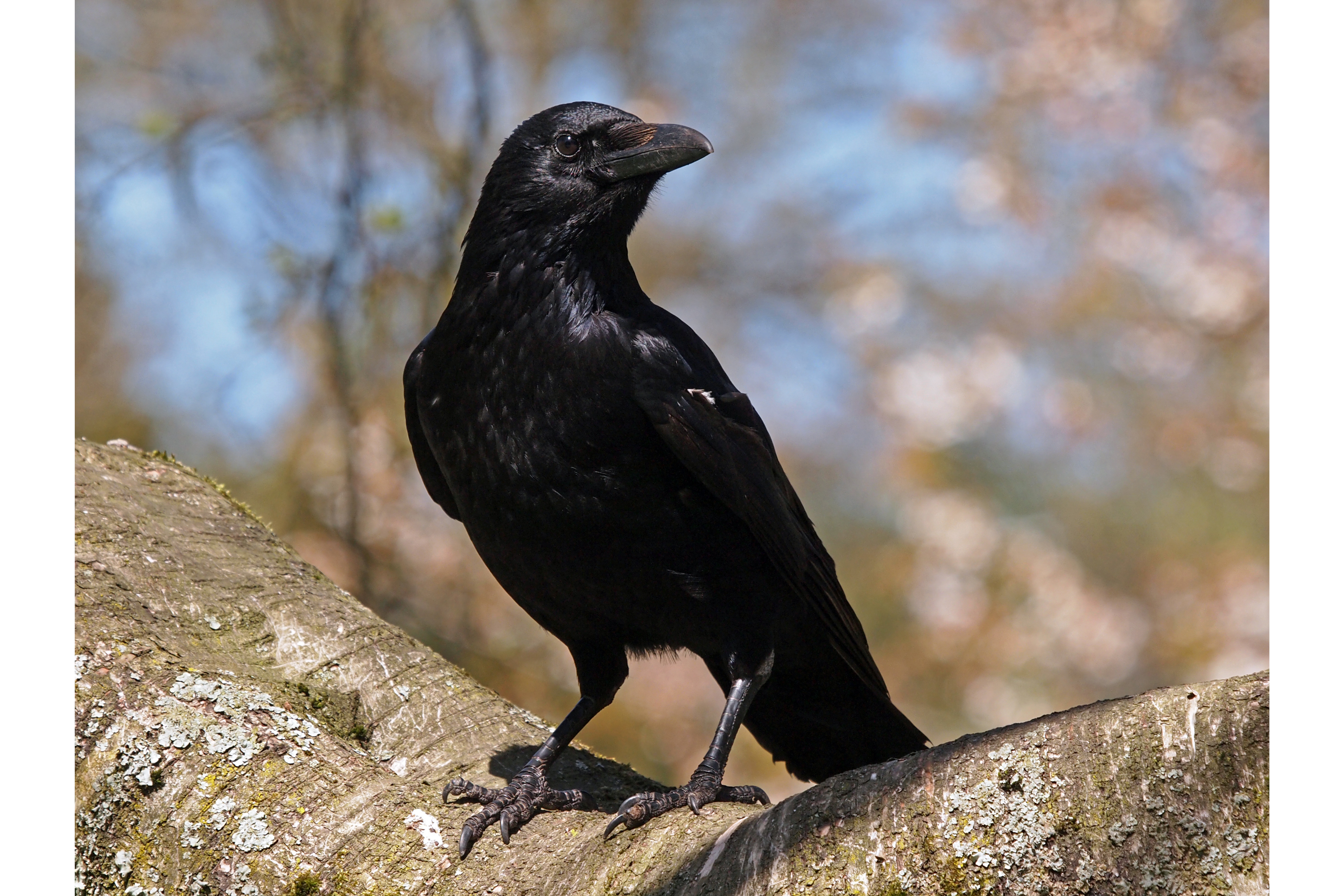Hawaiian crow
(Corvus hawaiiensis)

Description
The Hawaiian crow or ʻalalā (Corvus hawaiiensis) is a species of bird in the crow family, Corvidae, that is currently extinct in the wild, though reintroduction programs are underway. It is about the size of the carrion crow at 48–50 cm (19–20 in) in length, but with more rounded wings and a much thicker bill. It has soft, brownish-black plumage and long, bristly throat feathers; the feet, legs and bill are black. Today, the Hawaiian crow is considered the most endangered of the family Corvidae. They are recorded to have lived up to 18 years in the wild, and 28 years in captivity. Some Native Hawaiians consider the Hawaiian crow an ʻaumakua (family god). The species is known for strong flying ability and resourcefulness, and the reasons for its extirpation are not fully understood. It is thought that introduced diseases, such as Toxoplasma gondii, avian malaria (Plasmodium relictum), and fowlpox, were probably a significant factor in the species' decline. Before the Hawaiian crow became extinct in the wild, the species was found only in the western and southeastern parts of Hawaii. It inhabited dry and mesic forests on the slopes of Mauna Loa and Hualālai at elevations of 3,000 to 6,000 feet. Ōhiʻa lehua (Metrosideros polymorpha) and koa (Acacia koa) were important tree species in its wild habitat. Extensive understory cover was necessary to protect the ʻalalā from predation by the Hawaiian hawk, or ʻio (Buteo solitarius). Nesting sites of the ʻalalā received 600–2,500 millimetres (24–98 in) of annual rainfall. Fossil remains indicate that the Hawaiian crow used to be relatively abundant on all the main islands of Hawaii, along with four other extinct crow species. The Hawaiian crow was also preyed on by rats and the small Asian mongooses (Herpestes javanicus). Feral cats that introduced Toxoplasma gondii to the birds can also prey on chicks that are unable to fly. As of 2012, the Hawaiian crow's current population is 114 birds, the vast majority of which are in Hawaiian reserves. The omnivorous Hawaiian crow is a generalist species, eating various foods as they become available. The main portion of their diet, and 50% of their feeding activity is spent foraging on trunks, branches, and foliage for invertebrates such as isopods, land snails, and arachnids. They feed in a woodpecker fashion, flaking bark and moss from trunks or branches to expose hidden insects, foraging mostly on ohia and koa, the tallest and most dominant trees in their habitats.
Taxonomic tree:







